There’s something magical about discovering a pristine swimming spot tucked away in the heart of a forest. These hidden gems offer crystal-clear waters surrounded by towering trees, creating the perfect escape from crowded beaches and chlorinated pools. Forest swimming spots provide a refreshing way to connect with nature while cooling down during warm weather.
Here is a list of 20 incredible natural swimming locations nestled within forests across the United States.
Emerald Pool, Olympic National Forest, Washington
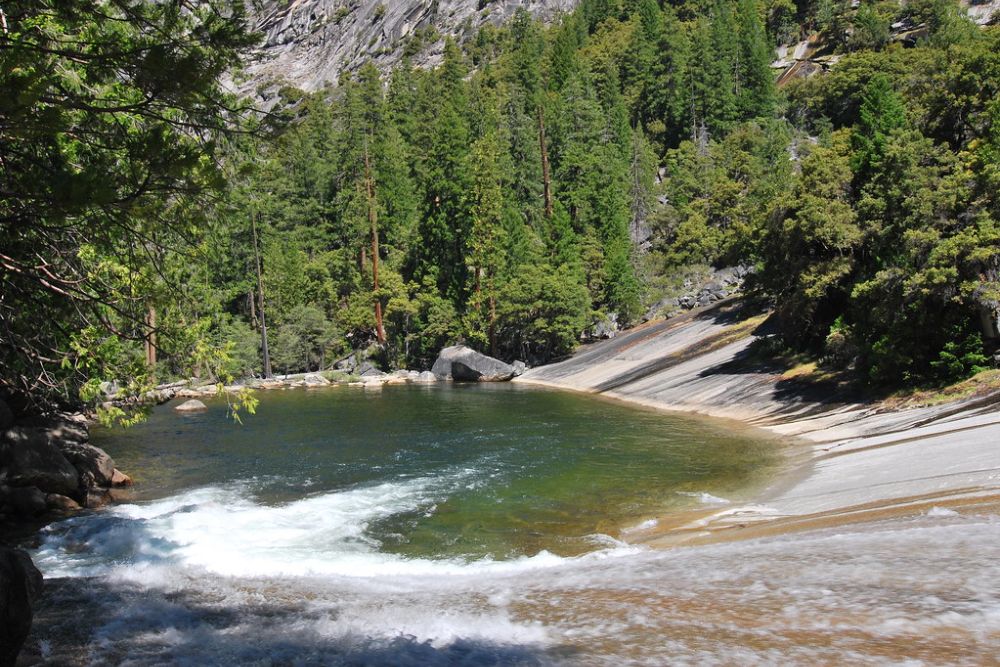
This stunning alpine lake sits at about 4,800 feet elevation and requires a moderate 2.5-mile hike to reach. The water maintains an emerald green color thanks to glacial sediment, and while it’s quite cold even in summer, the experience is worth it.
Ancient cedar and fir trees create a cathedral-like atmosphere around this pristine mountain pool.
Havasu Falls, Havasupai Tribal Land, Arizona
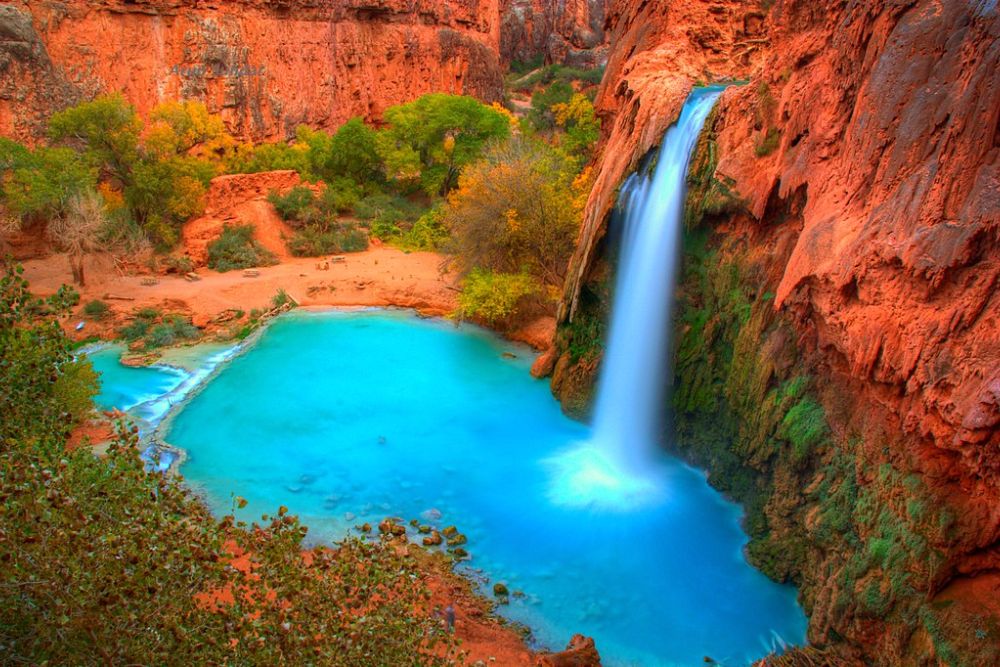
The turquoise waters of Havasu Falls create one of the most photographed natural swimming spots in America. Located deep within the Grand Canyon, this oasis requires an 8-mile hike through desert terrain, but the payoff is extraordinary.
The mineral-rich water maintains a constant temperature of around 70 degrees year-round.
Like Travel Pug’s content? Follow us on MSN.
Hamilton Pool, Austin, Texas

This natural grotto formed when an underground river collapsed thousands of years ago, creating a 50-foot waterfall that feeds into a jade-colored pool. Cypress trees and limestone cliffs surround the area, creating a serene and mystical atmosphere.
The water stays refreshingly cool even during Texas summers, making it a local favorite.
Jacob’s Well, Wimberley, Texas
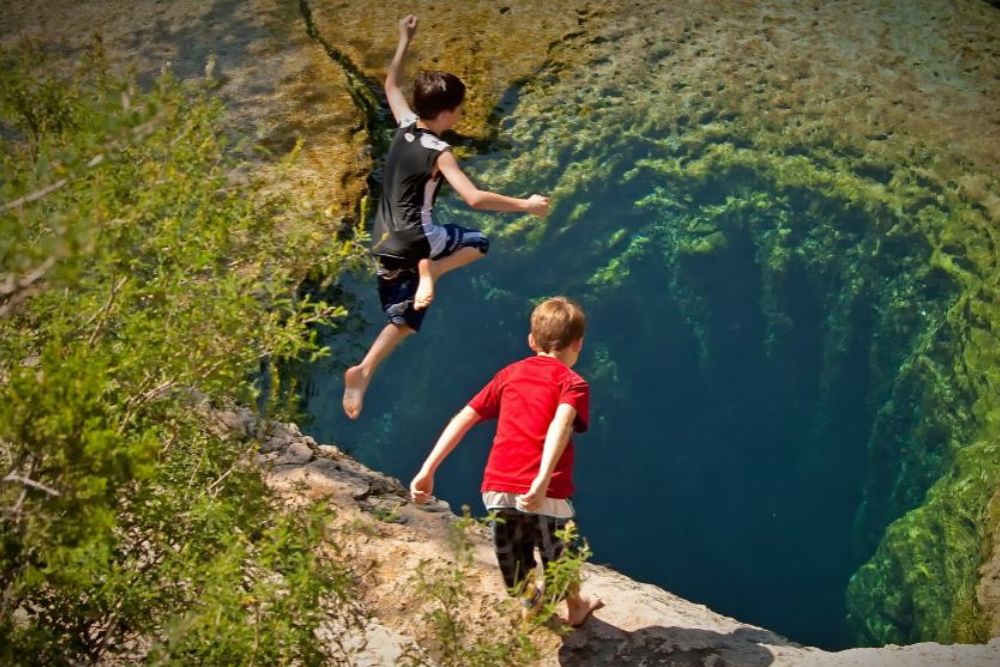
Known as one of the most dangerous diving spots in Texas, Jacob’s Well is also a beautiful swimming location for those who stay near the surface. This artesian spring produces thousands of gallons of crystal-clear water daily.
The surrounding cypress trees create a peaceful canopy over the 12-foot deep natural pool.
Blue Spring, High Springs, Florida
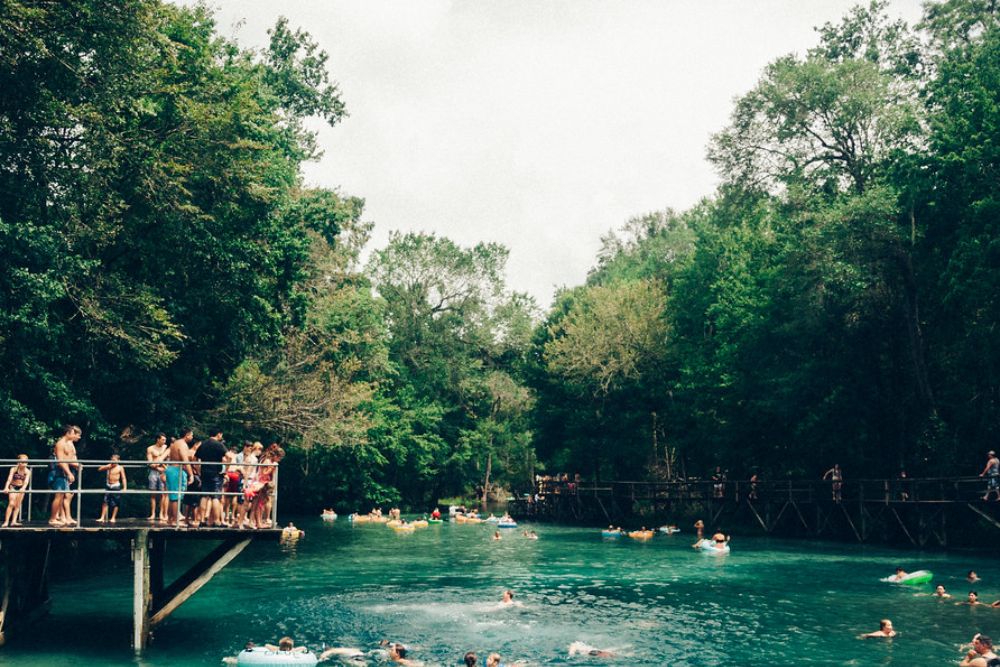
This first-magnitude spring pumps out 100 million gallons of 72-degree water daily, creating a consistently comfortable swimming temperature. Massive bald cypress trees draped in Spanish moss line the banks of this pristine waterway.
The spring serves as a winter refuge for manatees, though swimming is prohibited during manatee season.
Like Travel Pug’s content? Follow us on MSN.
Sliding Rock, Pisgah National Forest, North Carolina
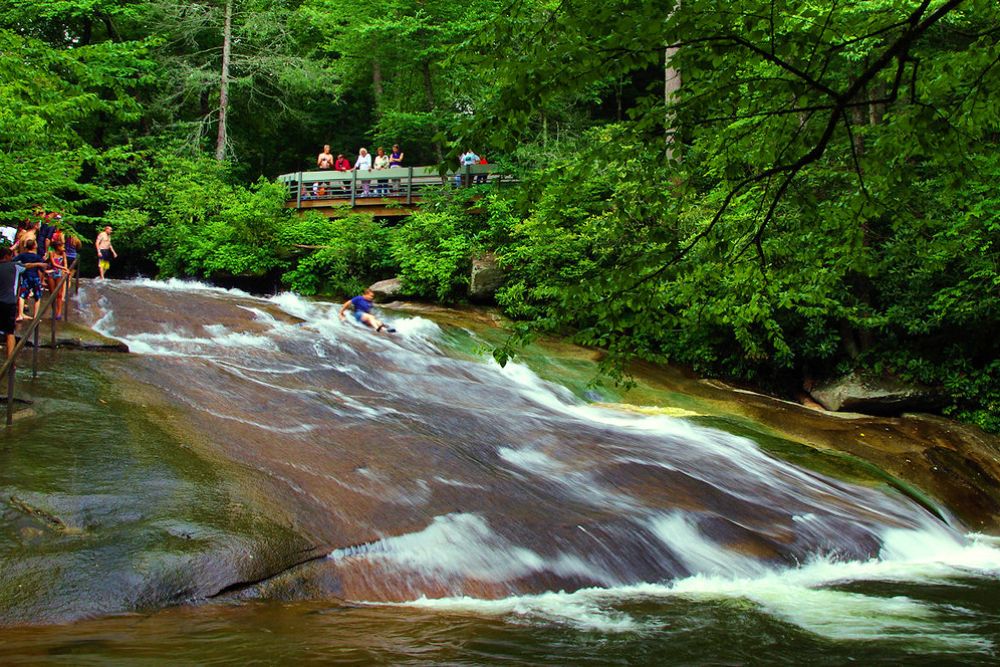
Nature created the perfect water slide when it carved this smooth granite chute over thousands of years. The 60-foot natural slide dumps swimmers into a deep, chilly pool surrounded by dense Appalachian forest.
Mountain laurel and rhododendron create a lush backdrop for this popular summer destination.
Devil’s Pool, Glacier National Park, Montana
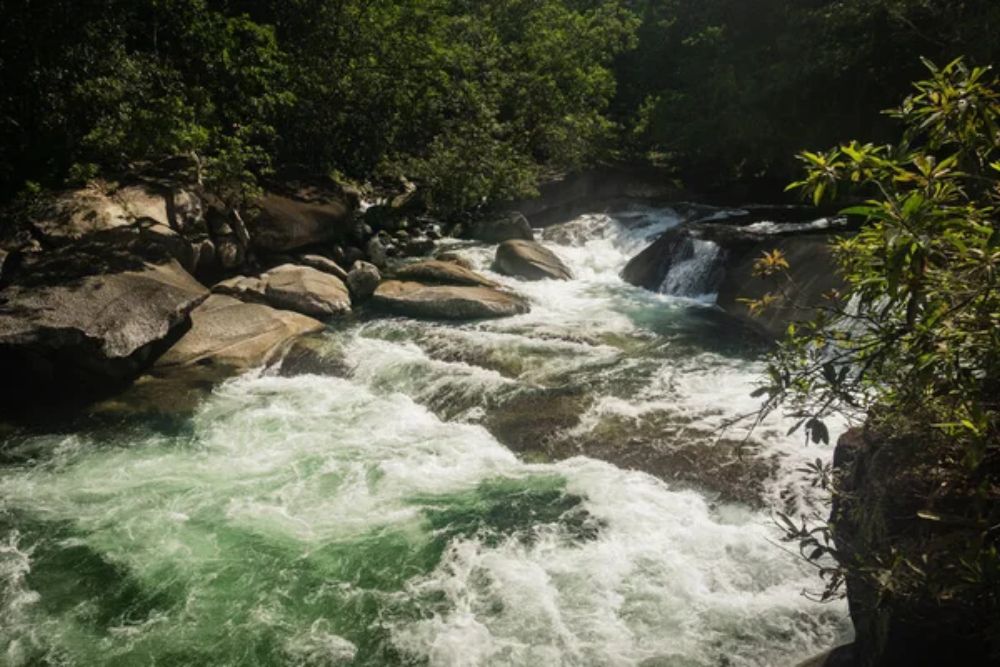
This remote alpine tarn requires a challenging 5-mile hike through pristine wilderness to reach. Surrounded by towering peaks and dense forest, the pool offers some of the clearest water you’ll ever see.
The water is bracingly cold even in late summer, but the stunning mountain scenery makes every degree worth it.
Grotto Falls, Great Smoky Mountains, Tennessee
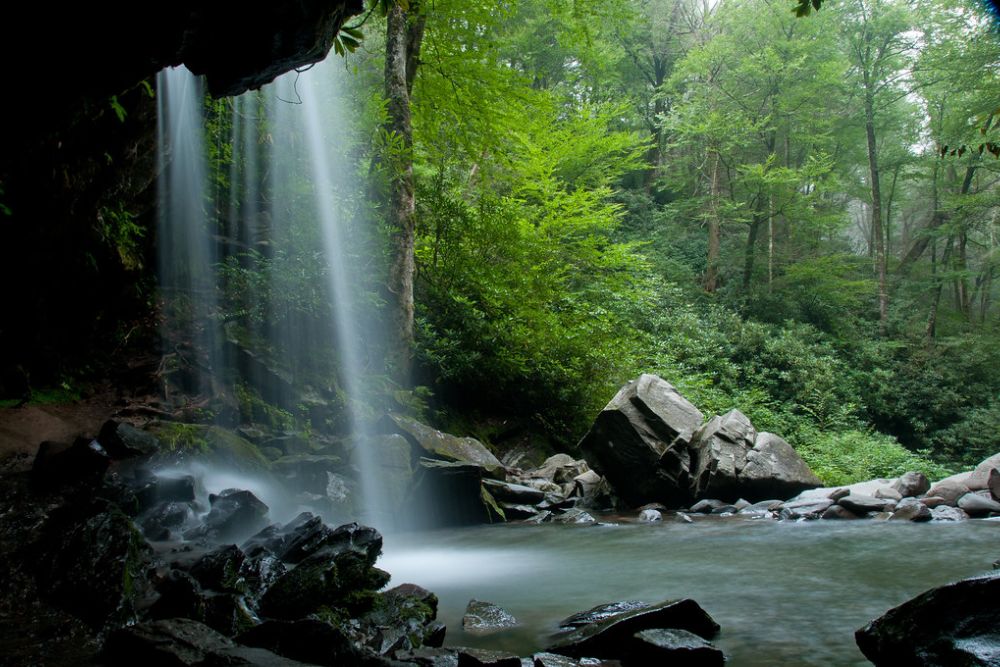
One of the few waterfalls in the Smokies where you can walk behind the cascade, Grotto Falls creates a perfect swimming environment. The 25-foot waterfall feeds into a deep pool surrounded by old-growth hemlock and tulip trees.
The constant mist from the falls keeps the area cool, creating a natural air conditioning system.
Like Travel Pug’s content? Follow us on MSN.
McWay Falls, Big Sur, California
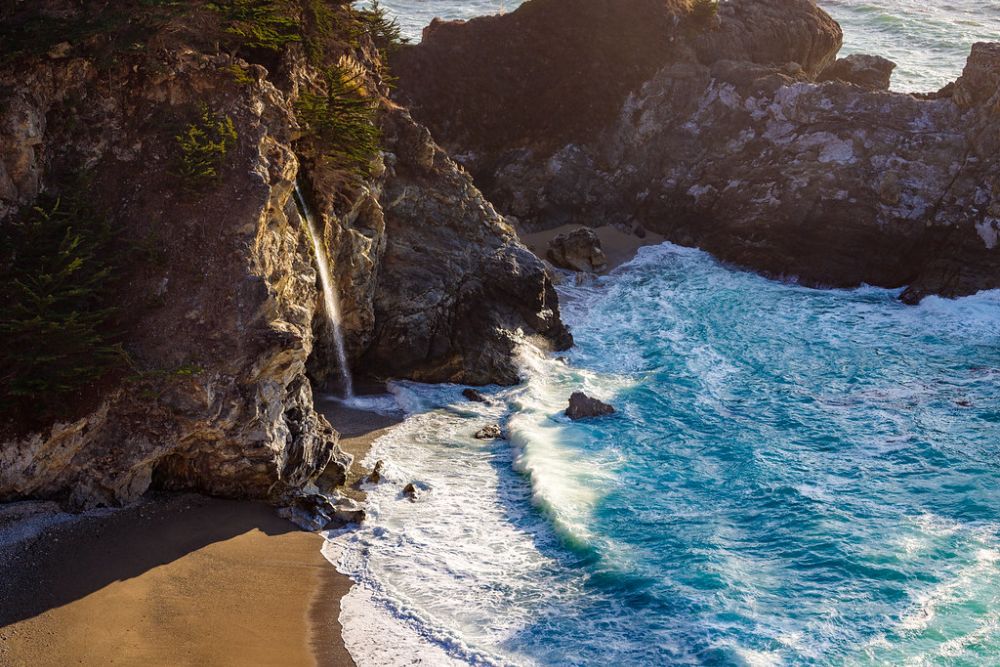
This 80-foot waterfall drops directly onto a secluded beach, creating picturesque tidal pools for wading—though swimming is not permitted due to restricted beach access. Towering redwoods and coastal live oaks frame this dramatic coastline location.
While ocean swimming can be chilly, the protected cove offers warmer water than the open Pacific.
Natural Bridge Swimming Area, Virginia
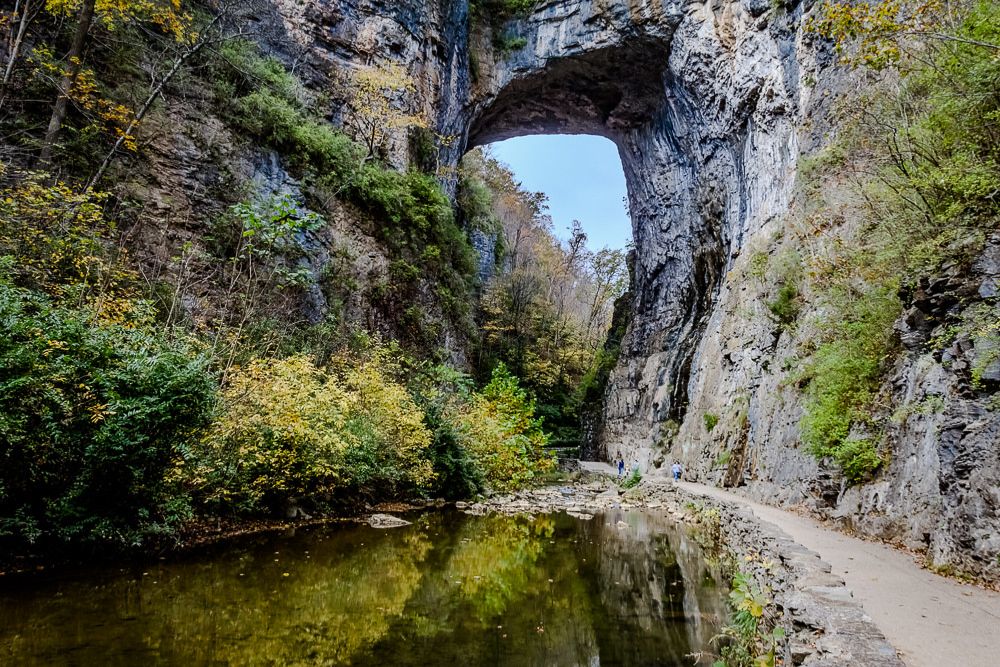
Located in Jefferson National Forest, this limestone arch creates a unique swimming environment with deep pools both upstream and downstream. The surrounding forest consists of oak, hickory, and maple trees that provide excellent shade during the summer months.
The water runs clear and cool, fed by Cedar Creek’s mountain springs.
Fossil Creek, Coconino National Forest, Arizona
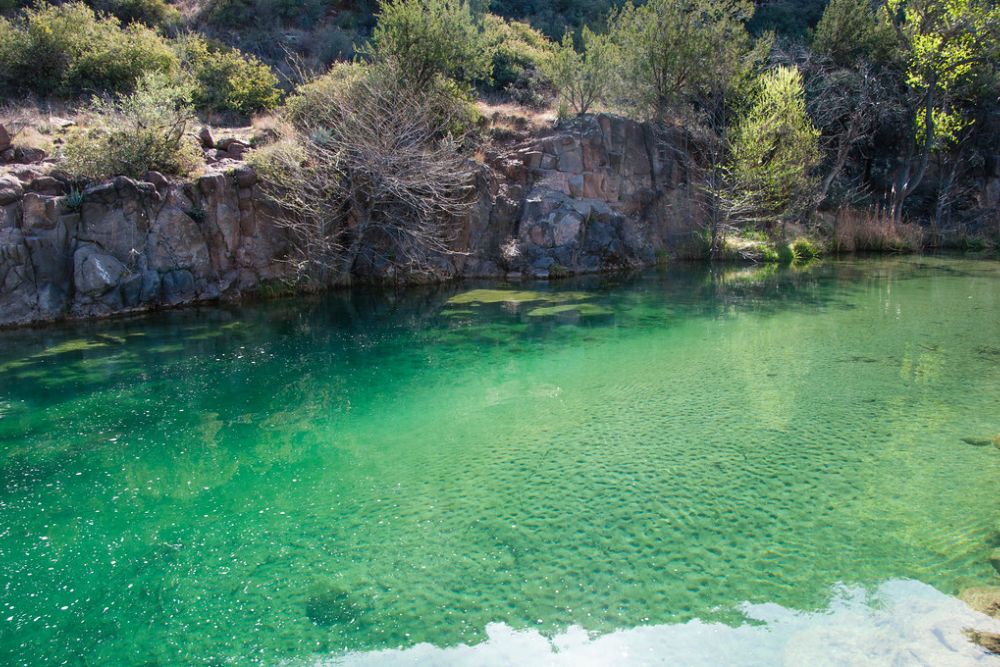
This spring-fed creek maintains a constant temperature of 70-72 degrees year-round, making it ideal for swimming in any season. Towering cottonwoods and Arizona sycamores line the banks of this oasis in the desert.
The mineral-rich water creates stunning travertine formations and brilliant blue-green pools.
Like Travel Pug’s content? Follow us on MSN.
Opal Creek, Willamette National Forest, Oregon
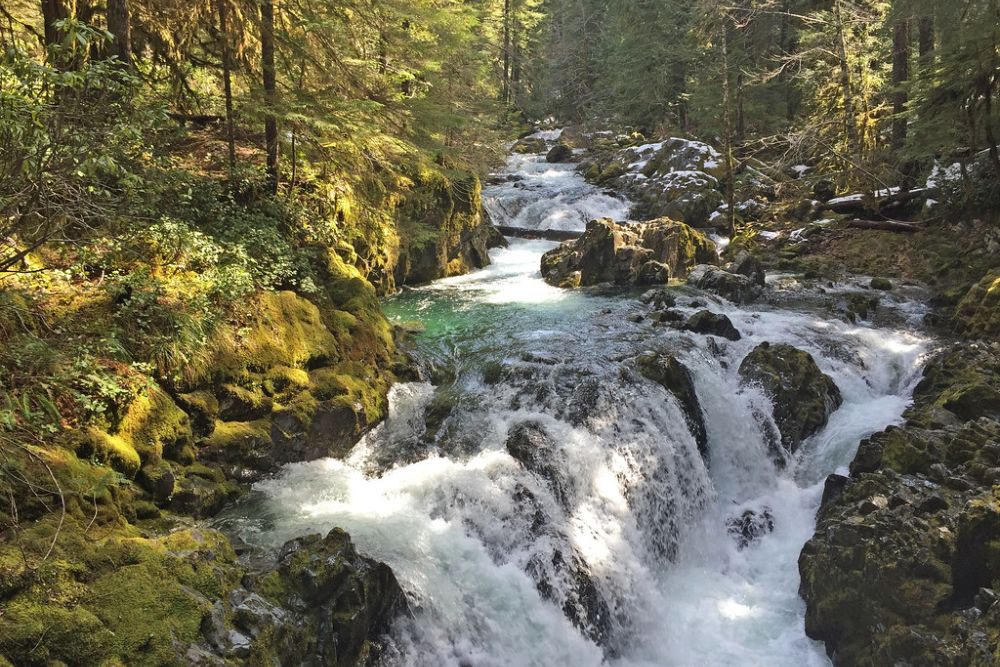
Ancient old-growth forest surrounds this pristine creek, with some trees over 1,000 years old. The water runs crystal clear over polished bedrock, creating deep, emerald pools that are perfect for swimming.
This area remained untouched by logging, preserving one of Oregon’s last intact old-growth watersheds.
Deep Creek Hot Springs, San Bernardino National Forest, California
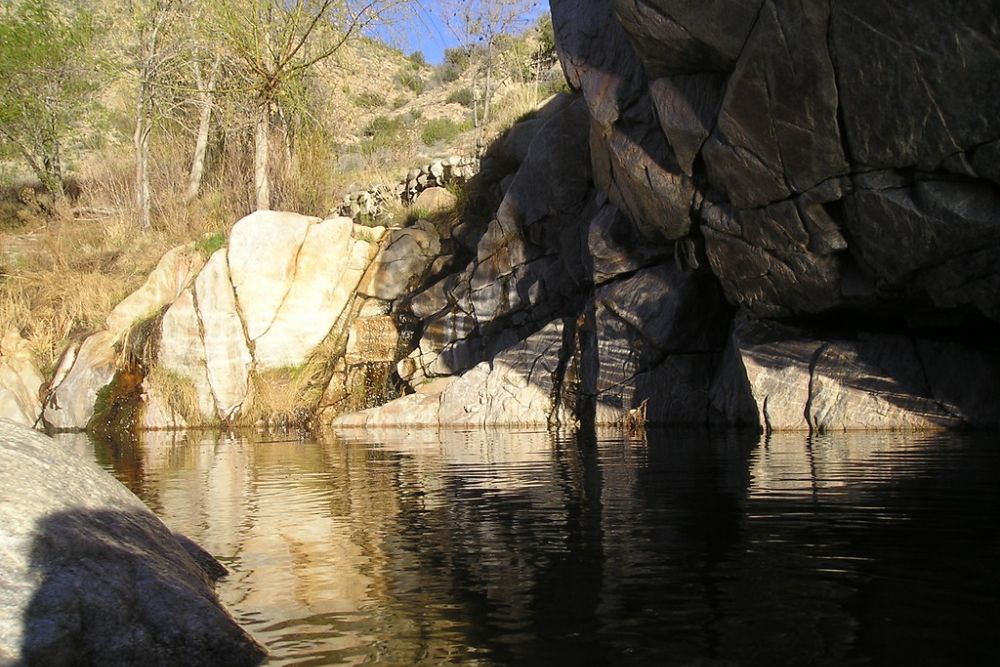
Natural hot springs feed into the creek, creating warm swimming areas surrounded by desert mountains and scattered oak trees. The springs maintain temperatures between 98°F and 108°F, offering a natural hot tub experience.
A moderate hike through chaparral and oak woodland leads to this desert oasis.
Punch Bowl Falls, Mount Hood National Forest, Oregon

This circular waterfall has created a perfect swimming pool, carved into the basalt bedrock over thousands of years. The dense Pacific Northwest forest of Douglas fir and western red cedar surrounds the area.
The 35-foot falls provide a gentle massage for swimmers brave enough to stand underneath.
Like Travel Pug’s content? Follow us on MSN.
Natural Bridge State Park Swimming Area, Kentucky
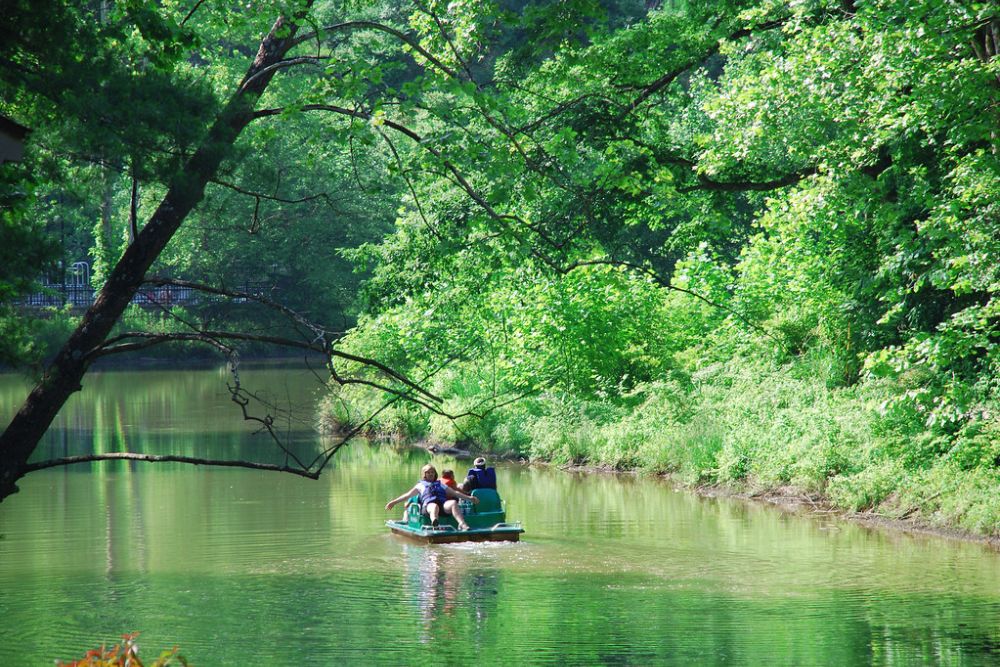
The Red River carved this natural sandstone arch over millions of years, creating deep pools perfect for swimming. A mixed hardwood forest of oak, maple, and beech trees provides excellent shade during summer.
The water stays cool thanks to the dense forest canopy and underground springs.
Glen Ellis Falls, White Mountain National Forest, New Hampshire
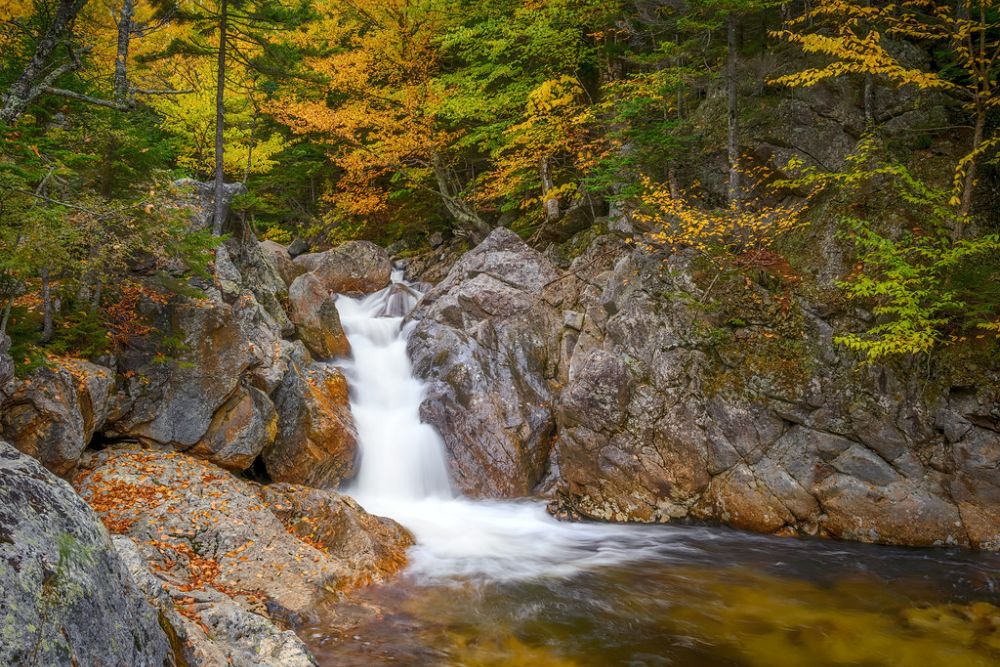
This 64-foot waterfall creates a large pool at its base, surrounded by dense northern hardwood forest. Sugar maple, yellow birch, and American beech trees create a stunning backdrop, especially during the fall foliage season.
The water stays refreshingly cold throughout summer, fed by mountain streams.
Kaaterskill Falls, Catskill Forest Preserve, New York
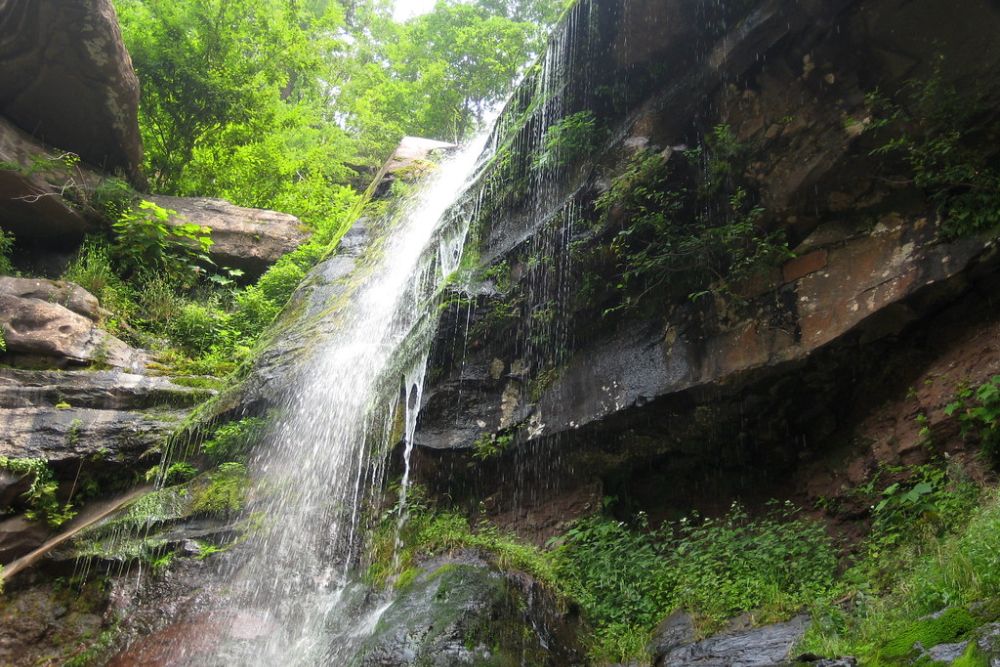
New York’s tallest waterfall drops 260 feet in two tiers, creating swimming opportunities in the pools between cascades. A dense mixed forest of maple, oak, and hemlock surrounds this dramatic gorge.
The lower pool offers the safest swimming, while the upper pool requires more adventurous scrambling.
Like Travel Pug’s content? Follow us on MSN.
Lower Lewis River Falls, Gifford Pinchot National Forest, Washington
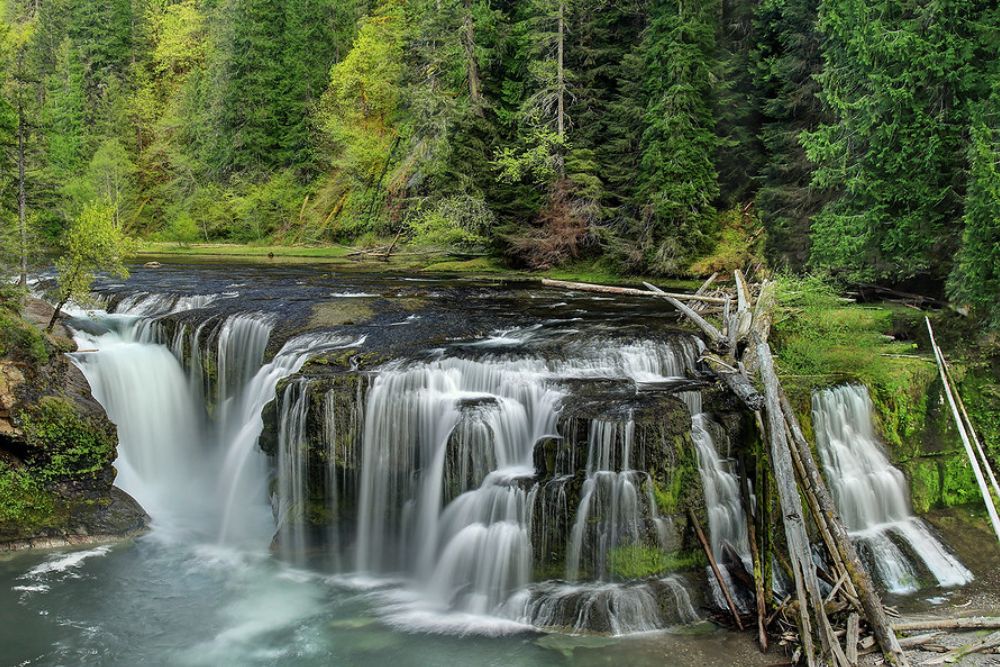
This multi-tiered waterfall system creates several swimming opportunities along the Lewis River. The dense Pacific Northwest forest of Douglas fir, western hemlock, and red cedar creates a cathedral-like atmosphere.
The pools vary in depth and temperature, offering options for swimmers of all comfort levels.
Cascade Falls, Jefferson National Forest, Virginia
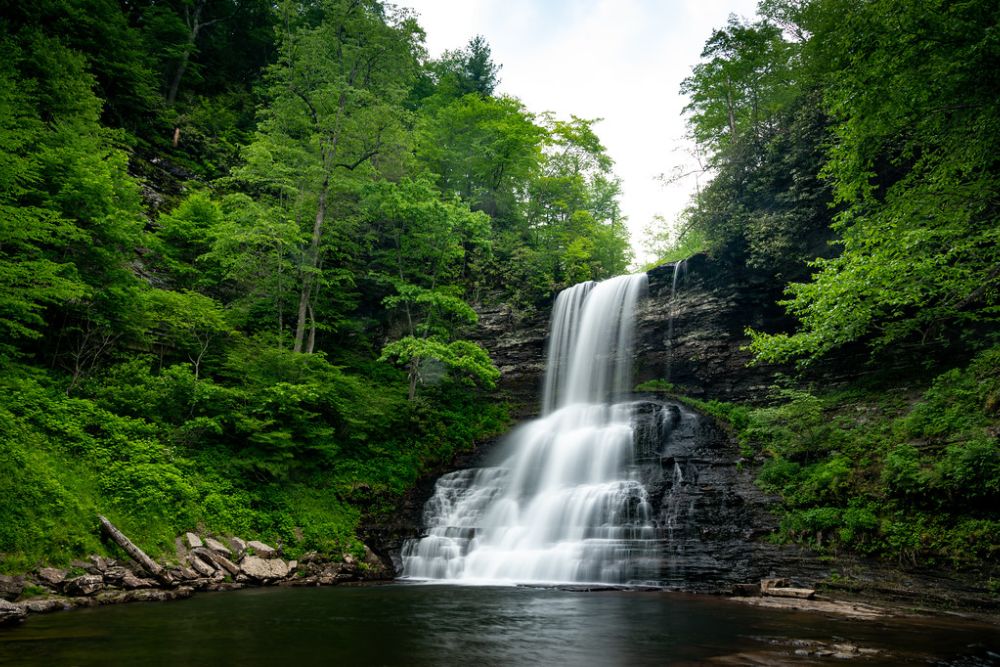
This 69-foot waterfall feeds into a large swimming pool surrounded by Appalachian hardwood forest. Oak, maple, and hickory trees provide excellent shade during Virginia’s hot summers.
The falls create enough current to feel refreshing without being dangerous for swimmers.
Crabtree Falls, George Washington National Forest, Virginia

Virginia’s tallest waterfall system creates multiple swimming opportunities along its 1,200-foot cascade. Dense mountain forest of oak, maple, and mountain laurel surrounds the entire trail system.
Several deep pools offer excellent swimming, with the lower pools being the most accessible and family-friendly.
Like Travel Pug’s content? Follow us on MSN.
Where Ancient Waters Meet Modern Adventures
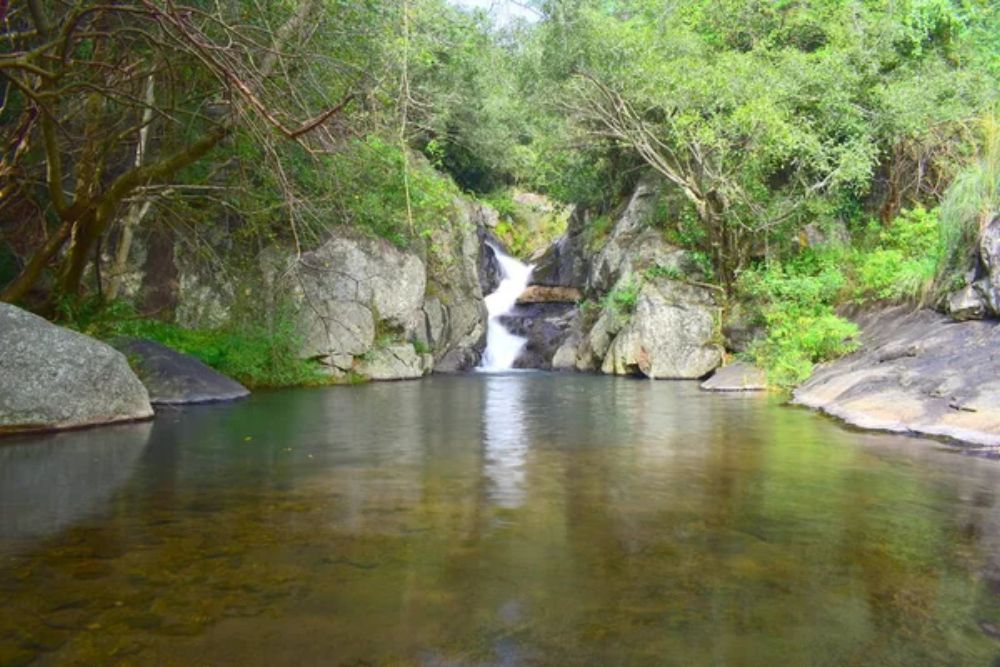
These forest swimming locations represent thousands of years of geological processes that have created perfect natural swimming environments. Many of these spots have been enjoyed by indigenous peoples for centuries before gaining popularity among modern outdoor enthusiasts. The combination of clean mountain water, pristine forest settings, and accessible hiking trails makes these destinations increasingly valuable as urban areas continue to expand.
These natural swimming areas remind us that some of the best recreational experiences don’t require admission fees or artificial enhancements. Protecting these pristine forest watersheds ensures that future generations can continue enjoying these remarkable natural swimming pools.
More from Travel Pug

- 20 Best Beach Towns in the Carolinas
- 13 Destinations Where Tourists Regularly Regret Their Trip
- 20 Destinations That Are More Magical Without an Itinerary
- 20 Underrated Adventures That Belong on Your Travel List
- 20 Cities Where You Should Just Wing It, No Planning Required
Like Travel Pug’s content? Follow us on MSN.
